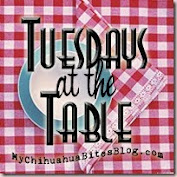
Ever wanted to try something new and fresh? Why not dye Easter eggs this year naturally? There are lots of things you should have around your kitchen or easily purchase at a grocery store.
The colors that emerge might surprise you. Coffee grounds will produce a light chocolate color,
tea bags a reddish brown. A gorgeous deep orange from onion skins and deep turquoise blue from red cabbage leaves and turmeric gives a nice sunny golden yellow.

Try fresh or frozen produce as canned produce doesn’t make good color. Some materials need to be boiled to impart their color. Some of the fruits, vegetables, and spices can be used cold. To use a cold material, cover the boiled eggs with water, add dyeing materials, a teaspoon or less of vinegar, and let the eggs remain in the refrigerator until the desired color is achieved. In most cases, the longer you leave Easter eggs in the dye, the more deeply colored they will become.

For those dyes that require boiling, use the following process. Place one to three handfuls of the dyestuff in a pan and add water to about an inch above the spice/food you are making your color with. Boil this mixture approximately 15 minutes to an hour or until it is the color desired. Please note that it will look darker than the finished dyed egg so judge the color accordingly. After boiling, strain the mixture through a coffee filter, add two to three teaspoons of white vinegar to each cup, and pour it into a bowl or jar so that it is deep enough to cover the eggs to be dyed. Place the eggs in the hot liquid using a spoon and let them set until they are the color you want.
Other dying agents can be used cold by mixing the dye spice/food, one to three teaspoons of white vinegar, and water (enough to cover the eggs once they are added) in a bowl. Once you have the color you want, place the eggs in the liquid (be sure they are completely covered) and refrigerate this mixture until the eggs are the color you want.
Here is the preferred method for using natural dyes:
• Place the eggs in a single layer in a pan. Add water until the eggs are covered.
• Add approximately one teaspoon of vinegar.
• Add the natural dye. Use more dye material for more eggs or for a more intense color.
• Bring water to a boil.
• Reduce heat and simmer for 15 minutes.
• If you are pleased with the color, remove the eggs from the liquid.
• If you want more intensely colored eggs, temporarily remove the eggs from the liquid, then strain the dye through a coffee filter (unless you want speckled eggs). Cover the eggs with the filtered dye and let them remain in the refrigerator overnight.
• Naturally-colored eggs will not be glossy, but if you want a shiny appearance you can rub a bit of cooking oil onto the eggs once they are dry.
Try coloring on the eggs with crayons or wax pencils before boiling and dyeing them.
Here are some colors to start!
Pink/red - Beets, cranberries, cranberry juice, raspberries, red grape juice, pickled beet juice, red onion skins (boiled), pomegranate juice, canned cherries with syrup
Orange - yellow onion skins (boiled), carrots, paprika
Yellow (various shades) - orange or lemon peel (boiled), carrot tops (boiled), celery seed (boiled), ground cumin (boiled), ground turmeric (boiled), chamomile tea, green tea, saffron
Green - spinach leaves (boiled), liquid chlorophyll
Green/gold - yellow delicious apple peel (boiled)
Blue - canned blueberries, red cabbage leaves (boiled and cooled), purple grape juice
Brown (various shades) - strong brewed coffee, instant coffee, dill seed, chili powder, black walnut shells (boiled), black tea
Lavender/shades of purple - purple grape juice, violet blossoms plus two teaspoons of lemon juice, red zinger tea, violet blossoms, hibiscus tea, red wine
Grey - purple or red grape juice, beet juice
For Strange colors you can dye eggs with Kool-Aid Packets.
Happy Easter!








